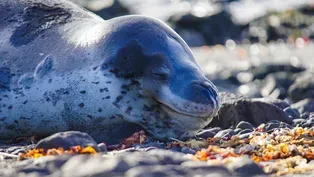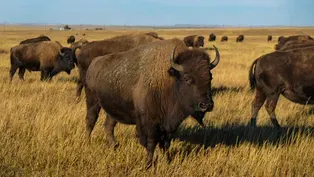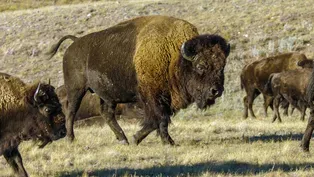
Finding Methane Bubbles in Permafrost
Clip: Episode 4 | 2m 40sVideo has Closed Captions
The ground is made up of both ice and frozen soil called permafrost.
The ground is made up of both ice and frozen soil called permafrost. As the permafrost thaws, the ground sinks and floods. The ice traps gases bubbling up from the decomposing permafrost. Methane traps 30 times more heat in the atmosphere than C02. As the world gets hotter, the permafrost melts faster – releasing ever-greater quantities of this dangerous greenhouse gas.
Problems with Closed Captions? Closed Captioning Feedback
Problems with Closed Captions? Closed Captioning Feedback

Finding Methane Bubbles in Permafrost
Clip: Episode 4 | 2m 40sVideo has Closed Captions
The ground is made up of both ice and frozen soil called permafrost. As the permafrost thaws, the ground sinks and floods. The ice traps gases bubbling up from the decomposing permafrost. Methane traps 30 times more heat in the atmosphere than C02. As the world gets hotter, the permafrost melts faster – releasing ever-greater quantities of this dangerous greenhouse gas.
Problems with Closed Captions? Closed Captioning Feedback
How to Watch Dynamic Planet
Dynamic Planet is available to stream on pbs.org and the free PBS App, available on iPhone, Apple TV, Android TV, Android smartphones, Amazon Fire TV, Amazon Fire Tablet, Roku, Samsung Smart TV, and Vizio.
Buy Now
Providing Support for PBS.org
Learn Moreabout PBS online sponsorship- The ground around me is made up of both ice and frozen soil.
We call that permafrost.
It contains twice as much carbon as the atmosphere, and it thaws faster as the climate gets warmer.
It's like opening a freezer door and the food that's in the freezer door starts to rot.
So the dead plant and animal remains that have been locked away in permafrost for thousands of years are now becoming food for microbes that decompose it, and they make greenhouse gases, methane and carbon dioxide.
[soft music] narrator: As the permafrost thaws, the ground sinks and floods.
- Since the 1980s, the amount of lakes here around interior Alaska has increased by 40%.
narrator: In summer, there's nothing to stop the damaging greenhouse gases bubbling up into the atmosphere.
But in winter, all that changes.
- These great big dimples are telling me that there's hardly any ice there.
- Okay.
- Be careful, though.
Thin ice means a hole we could fall into.
- Fun part of the job.
- It wasn't until I went out on a lake in the winter when the ice had frozen that I learned a lot about methane bubbles.
narrator: The ice traps gases bubbling up from the decomposing permafrost.
- Oh, there we go.
We found one.
See how round that is, and you can actually see some of the bubbles there... - Mm-hmm.
- Trapped in the ice.
So that's a good candidate.
narrator: There's a surefire way of finding out what gas this is.
[dramatic music] ♪ ♪ - Okay, ready?
- Yep.
♪ ♪ - Ooh!
- Whoa!
- Nice.
[laughter] - Are you okay, Phil?
That was about as good as they get.
[laughs] I wonder how high that went.
If we see gas pockets, we try lighting a match.
And if our match lights up into a big ball of fire, we know that we have a methane lake.
Whoo!
Antarctic Fur Seals vs. Leopard Seals
Video has Closed Captions
Antarctic fur seals need ice-free ground in order to breed. Why are they disappearing? (7m 20s)
Video has Closed Captions
For the Blackfeet Tribe, bringing back buffalo will revitalize the landscape. (5m 23s)
Video has Closed Captions
Amid the world’s ecosystems in chaos, can science, nature, and tradition prepare us for the future? (30s)
Providing Support for PBS.org
Learn Moreabout PBS online sponsorshipSupport for PBS provided by:














